#tamarack nation
Explore tagged Tumblr posts
Text
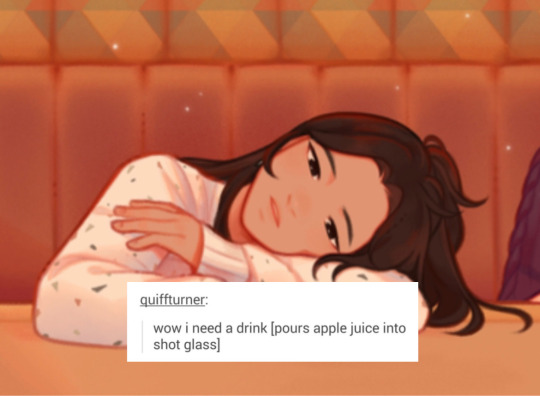
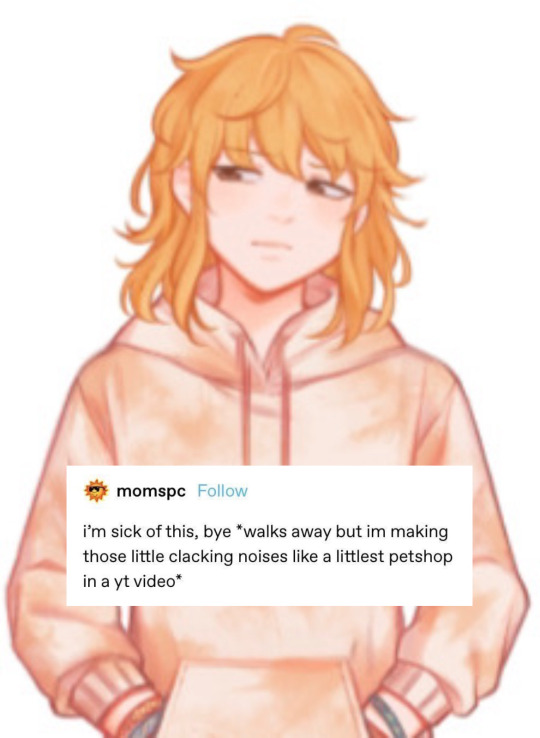
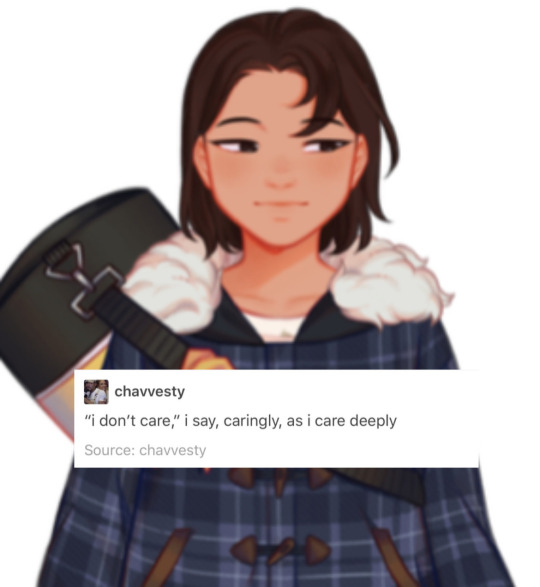
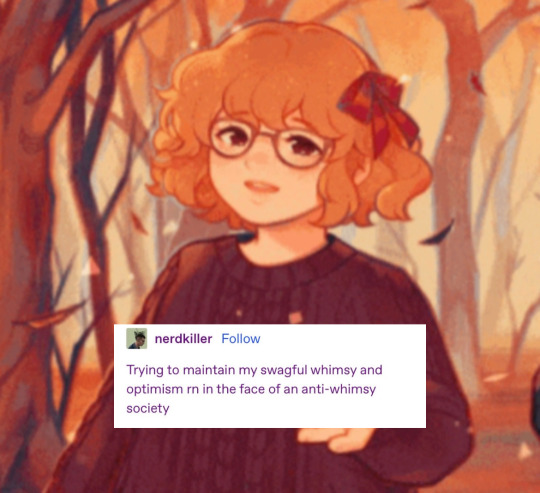
can u guys tell I’m excited for step 2………
#our life now and forever#our life: now & forever#tamarack baumann#tamarack nation#I wanted to add another tamarack one but decided it needed its own post#I shall put it out later!!#these are so low quality#but it makes me laugh
215 notes
·
View notes
Text






#good morning tamaren nation#if tumblr messes with the order of thhe pages i will ffaint#ffirm believer thhat renee fell ffirst#ttamarack: oh yyeah ive kinda liked you ever since u ccamr back from college#ren: hahahbyueah ive liked u since highschool#tamarack: wwhat WHAT#tamaren#YYOU DONT GET IT!!!#tamarack baumann#renee murray#olnf#our life now and forever
154 notes
·
View notes
Text
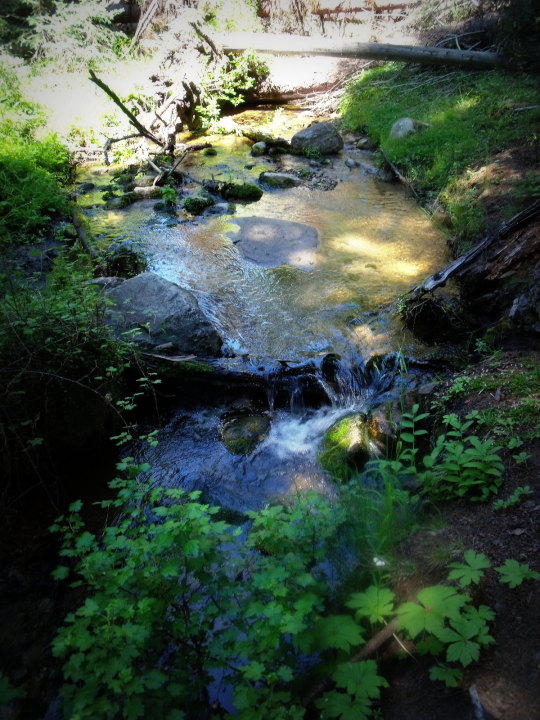
Aeneas Spring, Aeneas Valley WA ( picture taken by me August 2013. Sadly the spring is no longer running, I hear)
#Aeneas Spring#Aeneas Valley#Washington State#Okanogan County#Pacific Northwest#PNW#North Central Washington#eastern washington#Okanogan National Forest#Forest#Creek#Springwater#nature#evergreen trees#tamarack#American larch#pine trees#flora#landscape#my photography#nature photography#landscape photography#naturecore
24 notes
·
View notes
Text
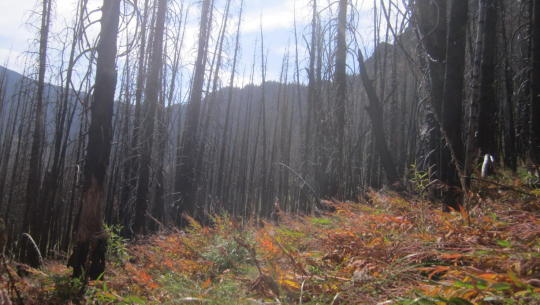
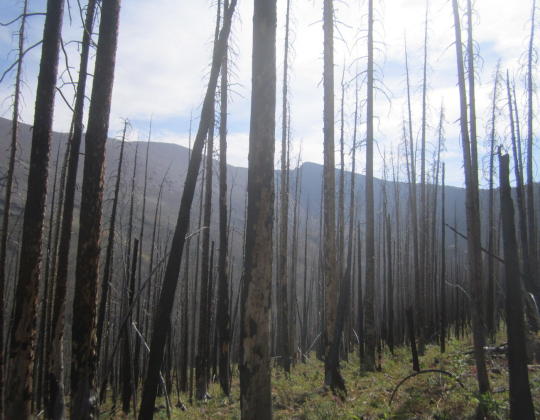

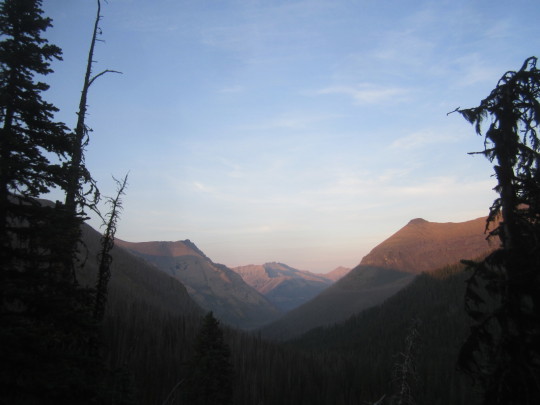
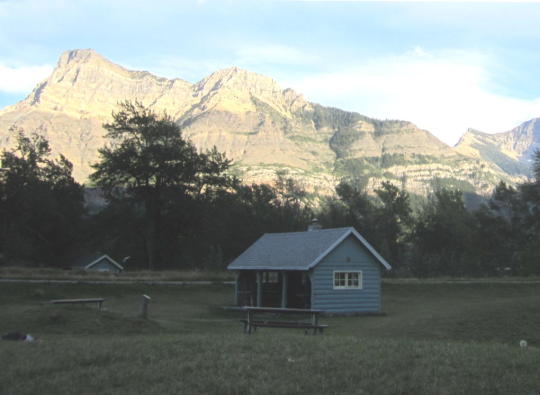
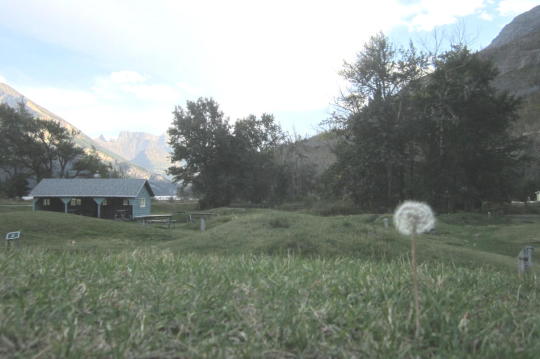
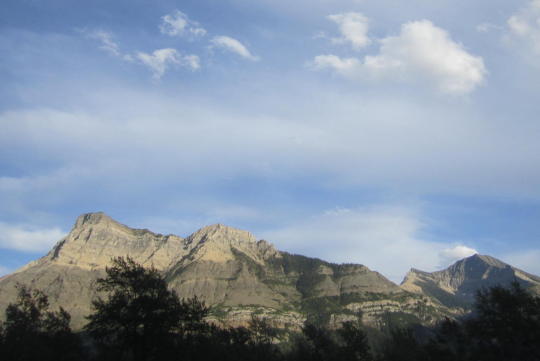
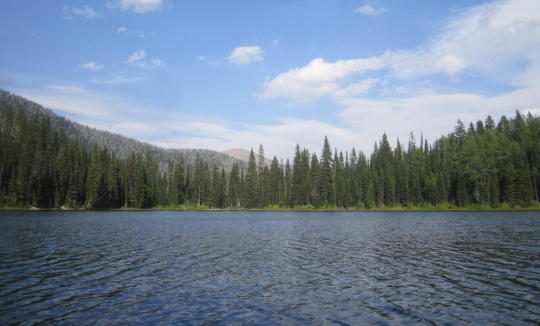
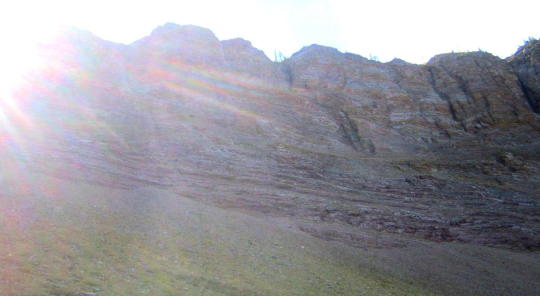
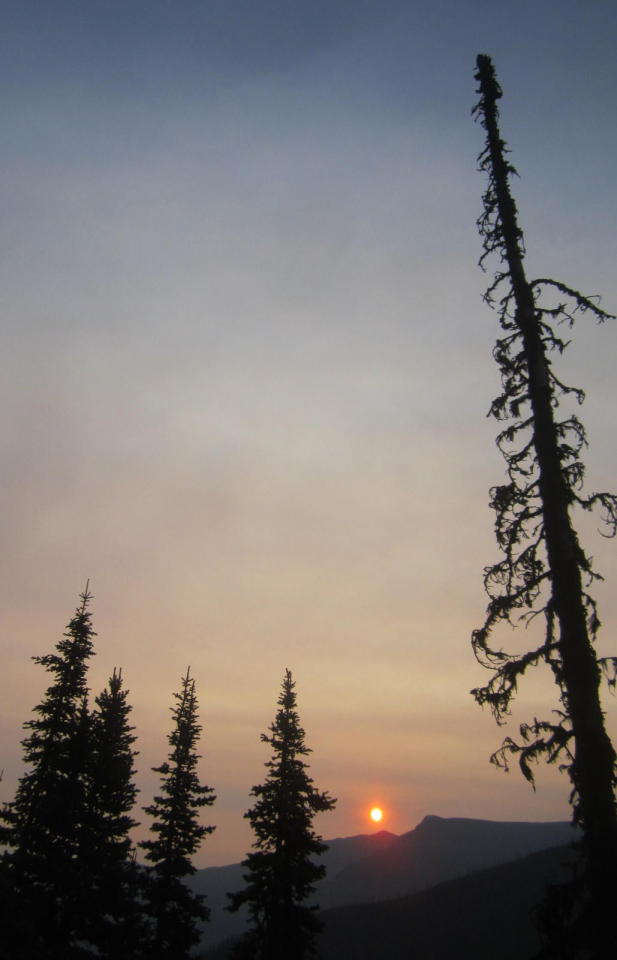
Another hike along Tamarack Trail in Waterton National Park and then, some front country camping. (8 to 11 September, 2024)
0 notes
Text

«Qiu thought it would be fun to wear Kiyoshi's glasses»
HELLOO OLNF NATION!!
Me and my bestie drew some collab art with our MCs!! So, Qiu and Kiyoshi are by @mmeowkyy and Tamarack and Ashley by me :333
Please let more people know about olnf It's such a wonderful vn....
Btw here are Kiyoshi and Ashley
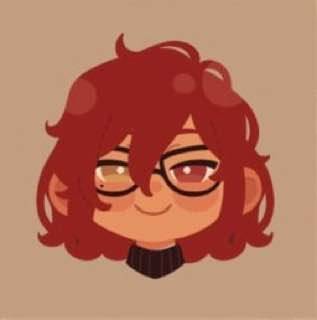
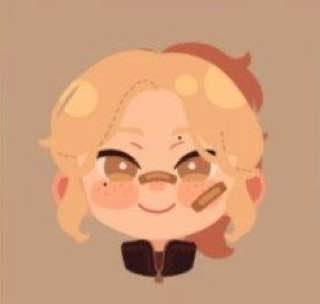
#olnf#olnf mc#olnf tamarack#olnf qiu#our life now and forever#our life mc#olnf fanart#qiu lin#tamarack baumann
149 notes
·
View notes
Text

Our programmer Shawna implemented a very fancy new way of letting people add their own information into the story and now it'll be possible to input more complicated details we couldn't add using the normal choices/flag system ✨
The prologue will be updated to allow you to determine exactly where you moved from, your race, and your nationality heritage! You can't talk about it with the other characters then, however Moments will be written with this feature in mind. So scenes are going to come up eventually where you can share with Tamarack and Qiu your own culture or let them know your family comes from the same place as one of them.
And this feature will be used for various other things, too.
A demo expansion and the Kickstarter are going live next month!
Our Life Now & Forever Kickstarter Page

Our Life: Now & Forever is a nostalgic Visual Novel where you create your own character and grow from childhood to adulthood with your two closest neighbors. It’s currently in development by GB Patch Games.
Steam Page
Itch.io Page
Discord - Twitter - Website - Patreon
#our life#visual novel#dating sim#interactive fiction#our life: now & forever#gb patch#gb patch games
1K notes
·
View notes
Text
Everyone give a round of applause to.......

Maymay Yù !!!
At 10 years old Maymay Yù moved to her to Golden Grove all the way to her birthplace : China! She was actually very excited to move into a whole new continent and explore every bits of corner and meet new people and maybe be their friends! Sure, she'll miss her friends, teachers and the nice old people back in China but hey, at least her ma is still with her.
Maymay is a cis girl all the way to step 4!
Just like Mariana, Maymay isn't afraid to tell the truth but she's not as like her. She'll sugarcoat her words with her charming and friendly personality.
"What do you think of my hat Maymay?"
"The hat is very pretty, you have good taste! But maayybee.. There's another one that could suit you even better?"
Just like Qiu, she was popular back in China because of her thoughtfulness, helpfulness and had plenty of people who wanted to spend time with her or sit next to her. And Maymay would accept without hesitation with open arms.
The relationship with the leads??!!
Whenever you would ask Maymay about love, she'd smile and say "It's a nice feeling, even tough I'm not the biggest fan of it."
When Tamarack Baumann popped out the leaves, Maymay noticed how her hair had sparkles in it and how she was so pretty.
Without hesitation the first said she did was to complimented her and felt even more happier when Tamarack responded back saying she was pretty and how she liked her bow. Which she reached up to it proudly.
They bonded very easily!! Immediately becoming forest buddies and went to find the paper airplane person who wrote weird stuff.
When she saw Qiu Lin, she thought "this is the second pretty person I saw, how many pretty people are there in Golden Grove?" a lot
Those two bonded also pretty easily thanks to their similar personality and Maymay teasing Autumn for their forgetfulness about the papers and Qiu teases her back about knowing she like him too.
In the end (step 4), Maymay sworn that day, she met the best people of her life (next to Opal) and found new family members <3
*—————*


Step 2 Maymay!!!! Isn't she pretty?
At 14 years old, she is still the same Maymay Yù, the same charming toughtful girl.
Expect there are some quick changes, the braces, sure but that's the typical teenage stuff let me tell you she barely couldn't eat anything when she first got them and she couldn't stop salivating everywhere.
Then we have.......her obsession with the color white, half of her wardrobe and accessories are white and maybe there a corners of her room is white. In her defense it suits her.
She is still forest buddies with Tammy of course, being the lead in between them with no problem and defending her like her life depends on it it actually does. <3
And with Autumn, 'Lulu' she calls them. She's there for them the same way Qiu was at 10. Also being the leader in the between of them.
She'd drop everything she's carrying without hesitation to lend an ear or shoulder for Qiu whenever they'd feel down. <3
Quick fun fact, in step 1 when Qiu introduced himself. She told him she knows what Qiu meant and that it's Chinese. She was actually happy there was someone else with the same nationality as her. She once spoke to him in chinese and... Qiu didn't really understand, he understood some of the words but didn't really know how to respond (he tried to, that's what it counts).
After that, Maymay would often tease them in chinese or just talk to them or teach them! She likes talking her native language so she's glad to teach anyone certain word or sentences.
Oh, and whenever you see Opal and Maymay together, chances are high they'd speak Chinese with each other too.
(and if Qiu's parent can speak Chinese decently well she'd talk to them in chinese as well :33)
*—————*
One last important thing, she did researches in step 2 - 3 about something, why she wasn't attracted to anyone, why she didn't feel those butterflies flap their wings inside her stomach and the basic romance stuff basically. And after some quick researches and relating to some texts ; she found out she's actually aroace!! And she came out to basically all the important people (including Yusuf her father figure) and of course they all supported her <3

WOO!! I love Maymay she's so silly goobers :3 and I'm glad to write about my mcs something I never tought I'd do tbh...
#our life#our life: now & forever#olnf#olnf qiu#olnf tamarack#olnf mc#olnf maymay#olnf rambles#our life now and forever#our life mc#maymay yù
51 notes
·
View notes
Text
I was planning to do like a college work for Qiu and Tamarack (celebrating making my college schedule), and it suddenly hit me that I'm almost completely done with high school.
I can't say I know what Qiu or Tamarack would do because of how whiplash the last few days have been. I have a national exam to take and like that's insane to me. Everyone finishes school in their own unique way that no matter how I would write Qiu or Tamarack, I don't think I could do them justice.
I can't wait for the rest of the game to release because graduating high school is NOT for the weak. I can't believe I've done 4 years of this. I'm so excited to finally be able to sleep in, even if it is only for a week.
As for my experience, it has been pretty smooth sailing. I'm friends with our school's valedictorian so we get to celebrate that. I'm going to finish my prom outfit, finally decorate my cap, and I'll figure it out from there.
Doing a bittersweet writing of graduation for my next work sounds really nice.
#our life 2#our life: now and forever#qiu lin#olnf mc#olnf#silly kiwi#tamarack baumann#ol2#olnf tamarack#olnf qiu
10 notes
·
View notes
Text
𝚃𝚎𝚊'𝚜 𝚂𝚒𝚍𝚎 𝙲𝚑𝚊𝚛𝚊𝚌𝚝𝚎𝚛𝚜: 𝚂𝚘𝚗𝚒𝚊

☘︎ ↳ ❝ I had a dream that the sun in the sky
Was feelin' so lonely, he started to cry
The rain on our window kept us inside
All of the morning, and into the night... ❞
(*ᴗ͈ˬᴗ͈)ꕤ*.゚
❝ Alone in my dream room, I want to love you... ❞ - "Man on the Moon" By Zella Day


𝚂𝚘𝚗𝚒𝚊 𝙶𝚎𝚗𝚎𝚟𝚒𝚎𝚟𝚎 𝙻𝚒𝚗𝚠𝚘𝚘𝚍
☘︎ The Basics ☘︎
Age(s): Step 1 - 10, Step 2 - 14, Step 3 - 18, Step 4 - 22
Birthday: December 17
Gender: Female (she/her)
Nationality: French
Height: 5'4"
Significant Other: Dante Rhodes (belonging to @captian-insecure)
Role: Side character in my OL:NF universe.
☘︎ Lore (past) ☘︎
Sonia Linwood was born in Nice, France on December 17th to her parents Baptiste and Sabine Linwood. She has four elder brothers: Jude, Beau, Raoul, and Quincy. She grew up primarily speaking French among her family and peers, but would catch some English from the occasional tourist in her mother's bakery. She spent most of her early childhood snoozing in the warmth of a patterned hammock or listening to her brothers' prattle about their school adventures.
This monotonous comfort would change whenever her family, alongside her extended relatives (including her aunts, cousins, and grandparents), moved to Oregon. Namely, the beloved Golden Grove. However, unlike her cousins Mina and Maël, she didn't live in a small cul-de-sac. Her house ended up on a hill about ten minutes away from them. Like all the houses in the town, her abode was hugged by blushing leaves and whispering briars.
She completed fifth grade at the same school as her cousins but wasn't in Mrs. Murray's class -- not that it made much of a difference to her. After the move, Sonia and her cousins drifted slightly. They lived farther apart now, had different classes, and new social groups. Sonia could already see how close the two were with their new friends. She wasn't going to try to wedge herself between that.
Instead, she made new friends, too. Despite lacking some significant English vocabulary, Sonia was very easy to talk to. She attracted friends as easily as she deflected them. Her mother liked to call Sonia a social butterfly. But she preferred the term 'a social paper bag'. Butterflies choose where they fly, purposefully picking the most beautiful of flowers. They select their meals with careful consideration. But that was not Sonia. She went where she was beckoned, by whatever beckoned her. She followed the current of socialization like a paper bag that flies away in the ripples of the wind. Sometimes they got stuck in nooks and crannies, but they usually found their ways out. That was Sonia.
She didn't really develop a consistent social group until she was fourteen, whenever she and Mina reconnected. Through Mina, she met Tamarack -- whom she had only previously known as Mina's good friend. Sonia also established strong bonds with Mina's other friends: Diana, Maxine, and Rex.
Though, at times it was hard to really say they were her 'friend group'. Sonia still sat and chatted with whoever she pleased, though most often she chose them. The paper bag couldn't be tied down. Not yet.
Whenever she was roughly fifteen, Sonia was officially diagnosed with Narcolepsy. From that point, she started taking the necessary measures to make sure it didn't impede her daily life too much. She doesn't often bring it up but is open about the diagnosis if asked.
During her later teenage years, Sonia began learning how to embrace her own style, and opened herself up to the world of romance. During her adolescent years, the concept hadn't interested her much, despite a handful of individuals expressing their interest in her. She'd seen the emotional turmoil of those around her. She wasn't keen on replicating it for herself.
She dated around a bit, but nothing ever stuck. Nothing seemed to click. Flings were boring while they lasted, and though the physical intimacy was moderately satisfying, she didn't feel as though anyone was truly seeing her.
Not until she met Dante, anyhow. They'd briefly glimpsed each other in passing before, but nothing was pursued until a link-up between mutual friends. The relationship moved faster than anything Sonia had experienced before -- much to her delight. She was certainly enraptured by his love of music, but it was his demeanor and empathy that ultimately stole her heart.
'Spiny on the outside, mushy on the inside'. That's how she first described him to her brothers and parents.
And upon meeting him, they didn't need much more convincing.
☘︎ Lore (present/ongoing) ☘︎
Following the solidification of their relationship, the two got a small apartment together -- where they live in present. Dante is still pursuing his music, waiting in anticipation for his girlfriend to come home from another of her late-night shifts at the hospital she does part-time work for. Time together is sporadic, but they treasure what they do have of it.
Sonia has been affectionately dubbed 'Sleepy' by Dante, which she wholeheartedly lives up to by dozing off whenever they're even slightly comfortable.
Her social presence narrows as well, as she become more devoted to certain friendships rather than floating between cliques. She maintains strong contact with her cousins, often trying to arrange times to meet up. Even with Vérène, who lives all the way in California, is among her closest confidants. She doesn't see Rex, Diana, or Maxine, as often -- but chats over phone aren't uncommon.
On her days alone, Sonia likes to use watercolor sometimes, often depicting the fields of landscape of France or a saturated scene from one of her dreams. She has also found herself collecting quite the abundance of unique, noisy windchimes to decorate her porch with (much to Dante's chagrin). But of course, the most common usage of her time is simply curling up on a sunlit armchair and sleeping the minutes away.
As she always has, Sonia takes life one thing at time. But now that she's an adult, things are a bit different. For once, being the paper bag stuck in a nook for a while doesn't seem so bad.

☘︎ Relationships ☘︎
Parents: Baptiste and Sabine Linwood
Siblings: Jude (M), Beau (M), Raoul (M), and Quincy (M)
Aunts: Opal and Sophie
Cousins: Vérène (F; child of Sophie), Mina (F; child of Opal), and Maël (M; child of Opal).
S/O: Dante Rhodes
Notable Friends: Tamarack Baumann, Rex (my OC), Diana (my OC), and Maxine (my OC), Dex and Christin (OCs of a friend, neither of them are mentioned above)

(*ᴗ͈ˬᴗ͈)ꕤ*.゚
𝙰𝚛𝚝 𝙲𝚊𝚝𝚊𝚕𝚘𝚐𝚞𝚎

As you may have deduced, this is Sonia and Dante together!

Sonia headshot art. <33 (both art pieces were done by me)

☘︎ Epilogue (Artist/Author's notes) ☘︎
Hello, everyone! If you've gotten this far, thank you for reading! I hope that this was relatively satisfactory in answering any questions you had regarding Sonia. As always, if there's anything that I left unanswered, feel free to ask!
If I remember correctly, Sonia was first conceptualized in February of this year, in which I was actually building on a pre-existing character. She first only existed to be a counterpart to Dante, but I quickly got extremely attached to her design and she kept popping up over and over in my sketchbook. Ultimately, I made the choice to make Vérène and Sonia related -- which is what generally solidified her as an important character. Of course, that also branched out to include being related to Mina and Maël, to whom she lives more closely to and can interact more directly with.
Sonia herself is very much one of my comfort characters. Her design is extremely fun for me to draw and replicate. I also enjoy playing around with her because she's very flexible to fit in a multitude of scenarios.
As always, I encourage questions. I recognize that the format of this post doesn't really touch on her personality itself very much, so if you all would find a separate post about that interesting, I'll consider making something about that too.

𝙴𝚡𝚝𝚎𝚛𝚗𝚊𝚕 𝙻𝚒𝚗𝚔𝚜
Spotify playlist: coming soon! (wip)
Moodboard: coming soon! (as soon as I figure out how to make one)
Pinterest Board: coming soon! (wip)
#our life#olnf#olba#my ocs#oc#our life now and forever#our life mc#ocs#our life beginnings and always#art#ourlifenf#qiu lin#olnf mc#olnf tamarack#teas sidecharacters series
21 notes
·
View notes
Text
Montreal is a city animated by a lingering cosmopolitan phantasmagoria, especially its two ‘man-made’ islands, Île Sainte-Hélène and Île Notre-Dame. Built to host Expo 67, a colossal World’s fair resting on dredged soil and urban debris, they became the experimental landscape and socio-technical matrix of the future megacity Montreal dreamt of being. This event crystallized the city’s image as the avant-garde “capital of the megastructure,” a concept which redefined (urban) spaces as dynamic relationships between people, technology, and dwellings, “coded [...] by notions of process” akin to those of the organism (Riar 2020, 200). Thirteen years later, the Floralies Internationales de Montreal was held in the wake of “Man and his World,” the fair’s permanent exhibition on Île Notre-Dame. The 8th International Horticultural Exhibition invited citizens to admire “the world’s most beautiful botanical garden” representing the cultures of twelve nations, including Canada. [...] The organizers viewed the gardens as “soft technologies,” designed to beautify the city while benefiting its economic and cultural sectors. [...]
[Gardens] offer “profound insights [...].” They are “sites where people explicitly stage [...] their relationships with nature” [...]. Gardens not only inform what [...] dwellers find valuable and good, they organize the political and economic relations urban centers cultivate - or not - with their peripheral others -- rural lands, ‘nonhuman’ life and ‘nonlife’. Botanical gardens, such as the Floralies [...] are not merely displays of state power and scientific knowledge, but technologies [...] that operate by transplanting alien ecological - so-called rural - habitats into the hybrid spaces of a metropolis.
And while we could frame this dynamic within urban/rural or center/periphery binaries, I contend that what made the Canadian garden a garden in 1980 was precisely its relationship to what lies far beyond the theoretical scope of such binaries - that which eludes rigid biological and geographical inscriptions: wetlands. What follows is a meditation about murky and precarious dwellings. And about binaries, and the relentless oscillations that govern places of belonging. It is an invitation to consider urban and rural geographies and all that lies beneath and beyond their preference for the living.
And it is the story of a northern peat bog that was “transplanted” to Île Notre-Dame in 1979.

“A little bit of James Bay in Montreal”
It took a fleet of trucks fifty 36-hour trips to haul half an acre of James Bay to Montreal. That “little bit” of Northern Quebec was more precisely 1300 frozen blocks of peat taken from the Hélène Lake bog, near the construction site of the LG2 hydroelectric project. [...] The blocks [...] were then reassembled [in Montreal] [...]. To ensure that the Notre-Dame peat bog bloomed in time for the Floralies, a year later, gardeners carefully monitored water and acidity levels [...]. The garden's “spongy consistency,” created by a combination of sphagnum mosses, tamarack, black spruce, hairy honeysuckle, round-leaved sundew, and Labrador tea, amongst 50 northern species, could be admired for the first time in Montreal’s temperate climate, a stark contrast to the hydrogeoclimatic conditions of James bay, 1500 km away [...]. In 1980, thirteen years after Expo 67, the bog was fully integrated as yet another dynamic process in the city’s “organic” megastructure.
Why did the chief horticulturist of the Montreal Botanical Garden choose to represent the “nation” with a northern peat bog?
Because Canada was, and still is, home to a quarter of the world's wetlands, which had already been massively drained for agriculture and urban sprawl. The garden's purpose was to bring the ecological benefits of these threatened ecosystems to an emerging environmental awareness.
Montreal, which used to be completely surrounded by “swamps and boggy places” [...] considered unsanitary in the 19th century, destroyed much of the riparian wetlands in the St. Lawrence Lowlands, eliminating 80% of its marshes [...]. The stinging irony is that manufacturing the islands for Expo 67 “was one of the single most damaging projects” for the surrounding wetlands (ibid.). So how could they be celebrated as part of a national heritage? [...]

“Canada is the wetlands settler country par excellence” (Giblett 2014, 11), as, much like Montreal, most of its early settlements were built alongside marshes. Its colonial literature has long portrayed these places as murky, monstrous, and ominous.
In the dominant cultural paradigm, marshes were seen as wastelands, which licensed industries to dump toxic waste in their waters or to drain them (35). Seen as dead and inauspicious lands, swamps, marshes, and bogs posed a threat to colonial powers, while being particularly difficult to map, as water and land were inextricably linked. Peat bogs especially are dense and viscous worlds where mosses thrive on top of their own decaying shroud, a process reaching back into the Carboniferous era “when swamps ruled the earth” (203).
---
This story of a garden made of moss not only reveals how Montreal discredited the way the Cree community valued and used wetlands, but offers insight into the colonial governance of Canada and Quebec. [...]
Ultimately, representing peat bogs as “barren lands” speaks to the political figuration of all that is not urban, or, in Giorgio Agamben’s words, as bare life, which, in Western politics, “has the peculiar privilege of being that whose exclusion founds the city of men,” ordered by the “good life” (Agamben 1998, 7). To be preserved, the elusive and ominous peat bog had to be transplanted to the city, where it could be a tamed vehicle [...].
Rethinking geographies beyond anthropocentric [...] views of what defines urbanities and ruralities, might allow us to better understand the constitutive exclusions that created this binary in the first place. In Canada, both urban centers and rural regions have been constituted through the destruction of wetlands. This was repeated in the 1980s, when, just two years after the Floralies championed the city’s green turn, the Notre-Dame peat bog was abandoned. Today, if you were to go there, you would find a dried-out pond, where meridional species have reclaimed their rights.
But perhaps its disappearance from the city's landscape is a sign that wetlands remain unsettled and unsettling.
---
Text by: Isabelle Boucher. “Urban Mires: What Happened to the Garden of Moss?” Heliotrope, Environmental Media Lab at the University of Calgary. 19 April 2023. [Bold emphasis and some paragraph breaks/contractions added by me. Images and captions are shown as published with Boucher’s text in the same article.]
#ecology#colonial#imperial#abolition#plantation#ecologies#tidalectics#montreal gardens#multispecies#geographic imaginaries#victorian and edwardian popular culture#agents of empire#indigenous#indigenous pedagogies#black methodologies#deserts are not empty
50 notes
·
View notes
Text

Goodnight tamarack nation ♥️
#our life now and forever#our life: now & forever#tamarack baumann#I had to crop out qiu#I should make more of these with them#tamarack nation
331 notes
·
View notes
Note
all of your ocs are so cute i cant BREATHE, would you be so kind as to give up some facts about them pls 🤲
These are just a couple starter facts about Mahki, Cricket, Bear, and Ryeom!
Mahki/Khi:
Love Language: Acts of Service. She loves using her own time to dedicate to her crush by making little crafts and then giving them to Tamarack.
Fears: spiders and most other bugs (except ladybugs)
Favorite Color: Yellow and pink
Transportation: Rollerskates
Favorite Movie Genre: Rom Coms
Favorite Holiday: Valentines Day. She loves having an excuse to wear all the pink and red she desires, and make cute little valentines gifts for Tamarack.
Left Handed
She's always nervous to move because it means having to meet new people and worry if people are even going to accept her there.
What do they carry in the pocket of their jacket? candy from the entrance of Tamarack’s house
Strange things they hate worms and non-hard cover books
Morning Person or Night Owl - Morning Person
If they had one superpower what would it be? Invisibility
Bear:
Love Language: Quality time. Bear can be quite introverted, preferring to listen to his music or wood carve rather than hang out for a long time. But Bear noticeably makes more effort to hang out with Tamarack and Qiu. He really likes being around them, listening to them, joking around with them.
Fears: terrified of lightning and thunder / uncomfy by loud sounds
Favorite Color: Purple
Transportation: Bike
Favorite Movie Genre: Fantasy
Favorite Holiday: Halloween
Right Handed
Mad at his mom for moving so much, and he struggles to communicate his feelings a lot. Whenever he's stressed, he feels like he can't speak in those moments, so he takes time alone to think through his feelings before coming back and trying to speak about it.
What do they carry in the pocket of their jacket? stress/fidget cube
Strange things they hate wearing stud earrings
Morning Person or Night Owl - Night Owl
If they had one superpower what would it be? Reading minds
Verde/Cricket:
Love Language: Physical Touch. The best way for him to express that he cares for his friends is by touch. A squeeze on the hand, an arm over the shoulder, hugging, pinky holding, etc etc.
Fears: Of not succeeding or getting anywhere with his music career
Favorite Color: Green
Transportation: Skateboard
Favorite Movie Genre: Horror (less gore though)
Favorite Holiday: National Bubble Wrap Appreciation Day
Left Handed
He's used to moving at this point, so whenever he moves, he makes some songs inspired by each town or the people who're memorable to him.
What do they carry in the pocket of their jacket? Guitar picks
Strange things they hate Ladybugs. Hates them ever since *the incident*
Morning Person or Night Owl - Morning Person
If they had one superpower what would it be? Immortality
Ryeom/Rye:
Love Language: Words of Affirmation. He loves praising others, though its difficult for her to fully accept compliments or praises back. They think it's important to remind the people they care about that they're very very valuable to him.
Fears: the dark
Favorite Color: Cranberry
Transportation: Skateboard
Favorite Movie Genre: Drama
Favorite Holiday: New Years
Ambidextrous
Poor kid when it comes to moving. She's very anxious about the thought of leaving this town because he's grown to love this town and the people in it..
What do they carry in the pocket of their jacket? Finger skateboard from a scholastic book fair
Strange things they hate Animal prints fur texture
Morning Person or Night Owl - Night Owl
If they had one superpower what would it be? Shapeshifting.
16 notes
·
View notes
Text

Autumn Larches and Tamaracks line a dirt road near Glacier National Park in Northwest Montana.
1 note
·
View note
Text
The Surfrider Foundation's Impact in San Diego
In 2024, Surfrider San Diego demonstrated the power of collective action in protecting and preserving our coastal environment. Through volunteer-driven initiatives, strategic advocacy, and community engagement, the organization achieved significant milestones in beach cleanups, environmental advocacy, and pollution prevention, fostering a healthier coastline for future generations.
Surfrider San Diego’s beach cleanup efforts saw remarkable engagement, with 189 events mobilizing over 10,000 volunteers to remove 12,093 pounds of trash, including vast amounts of plastic debris and cigarette butts. Expanding their reach, the Tamarack-South Ponto cleanup successfully engaged 850 volunteers, while the Pacific Beach cleanups increased in frequency. The annual July 5th “Morning After Mess” event collected nearly 4,000 pounds of trash from nine popular beaches. Additionally, a collaborative effort on National Coming Out Day engaged 200 volunteers in removing 235 pounds of debris while promoting inclusivity.
The Beach Preservation committee actively monitored threats to coastal access and environmental health, submitting 22 comment letters addressing key concerns. Their efforts supported the Beacon’s Beach Parking Lot Relocation project, opposed harmful seawall proposals, and helped prevent North County Transit District from bypassing state environmental regulations for Del Mar’s rail repairs. Public education efforts around King Tides also highlighted coastal erosion and climate change impacts.
Surfrider’s Blue Water Task Force collected 217 water samples to monitor pollution levels at 17 beaches, expanding efforts in high-risk areas like Imperial Beach. Their advocacy for clean border water highlighted the environmental crisis in the Tijuana River Watershed, culminating in a petition delivered to the White House with 7,450 signatures and a high-profile advocacy event in Imperial Beach.
Climate change initiatives included advancing San Diego County’s Climate Action Plan database, supporting wetland restoration projects, and advocating for sustainable urban development. Surfrider’s Rise Above Plastics program led efforts to implement plastic reduction ordinances in several cities, with new bans on single-use plastics and foam products in Carlsbad, Del Mar, Oceanside, and San Marcos.
The Ocean Friendly Restaurants program reached 100 participating establishments and launched the Ocean Friendly Hotels initiative, with The Pearl and Twelve Senses Retreat as the first certified locations. Looking ahead to 2025, the goal is to expand this initiative to 100 hotels, incorporating educational outreach to guests.
Surfrider San Diego’s 2024 accomplishments reflect the collective impact of volunteers, advocates, and partners dedicated to preserving our coastal ecosystems. With sustained momentum, the organization aims to further environmental advocacy, community engagement, and policy change in the coming year.
0 notes
Text

Climate of Illinois
See Weather Forecast for Illinois today: https://weatherusa.app/illinois The geographical position and elongated north-south axis of Illinois result in significant regional temperature variations. Throughout the state, seasonal temperature fluctuations are pronounced, characterized by cold, snowy winters and hot summers, although the influence of Lake Michigan helps temper extremes. In the northern part of the state, mean winter temperatures hover around 22 °F (-6 °C), contrasting with around 37 °F (3 °C) in the south. Similarly, summer temperatures average at approximately 74 °F (23 °C) in the north and 80 °F (27 °C) in the south. Annual precipitation also exhibits a gradient, with around 34 inches (864 mm) in the north and 46 inches (1,170 mm) in the south. The length of the growing season varies across the state, ranging from 205 days in the south to 155 days in the northernmost counties.
See more: https://weatherusa.app/zip-code/weather-60026
https://weatherusa.app/zip-code/weather-60050
Illinois boasts distinct vegetational regions, primarily characterized by the tallgrass prairie in the northern and central areas and the oak-hickory forest in the western and southern regions. However, only small remnants of the original tallgrass prairie remain, with some areas undergoing restoration efforts. Notably, the Midewin National Tallgrass Prairie, located near Joliet, stands as the largest restored prairie in the state.
Historically, before European settlers arrived in the 17th century, oak-hickory forests were prevalent even in the northern regions of Illinois. However, the settlers, driven by the need for wood for fuel, construction, and the lumbering industry, extensively cleared forests, resulting in a significant reduction of forest cover. Presently, approximately 6,200 square miles (16,000 square km) of forests remain in Illinois, with Shawnee National Forest accounting for around 1,100 square miles (2,800 square km) of them.
See more: https://weatherusa.app/zip-code/weather-60078 https://weatherusa.app/zip-code/weather-60139
https://weatherusa.app/zip-code/weather-60148
Due to its geographic length, Illinois exhibits a unique blend of Northern and Southern plant life. This diversity is evident in the wide array of wildflowers and trees found across the state. Species such as white pines, tamaracks, walnuts, cypresses, and tupelos thrive in Illinois, representing a rich tapestry of flora that contributes to the state's ecological heritage.
Before 1800, Illinois was teeming with abundant wildlife, populating the prairies and forests with iconic species like bison, bears, wolves, mountain lions (pumas), porcupines, and elk. However, due to human activities and habitat destruction, these once-thriving populations dwindled and disappeared. Deer, for instance, went extinct in 1910, but efforts by the state department of conservation in 1933 saw the reintroduction of small herds, leading to the establishment of a growing deer population. By the early 21st century, the number of white-tailed deer in Illinois had surged into the hundreds of thousands.
While some species have experienced successful reintroduction efforts, others, like coyotes and foxes, have adapted to survive in woodlands, natural areas, and increasingly, urban environments. Game birds such as quail and pheasant, though not as plentiful as in the past, still inhabit the region, while waterfowl populations thrive during spring and fall migrations.
However, pollution has taken its toll on aquatic life, nearly wiping out many species of fish. Despite this, bullheads, carp, catfish, white and yellow bass, and walleye continue to thrive in Illinois' waters, offering opportunities for fishing enthusiasts and serving as vital components of the state's ecosystem.
See more: https://weatherusa.app/zip-code/weather-60163
https://weatherusa.app/zip-code/weather-60188
https://weatherusa.app/zip-code/weather-60190
The optimal times to visit Illinois are typically from April to mid-May in the spring and from September to October in the fall. During these seasons, the weather is generally more agreeable compared to the extreme heat of summer and the cold of winter.
Spring offers pleasant temperatures and vibrant blooms, making it an ideal time for outdoor activities. However, late spring and early summer can be wet, with occasional thunderstorms and the risk of flooding.
Autumn in Illinois is characterized by colorful foliage, comfortable mornings, and breezy evenings, providing a picturesque backdrop for exploration.
Conversely, late fall sees temperatures dropping rapidly, accompanied by cold and windy conditions.
Summers in Illinois are often hot and humid, with large crowds and higher prices for attractions. Thus, visitors may find spring and fall to be more budget-friendly options.
Overall, visitors can enjoy lighter crowds, pleasant weather, and scenic beauty during the spring and fall months, making them the preferred times to explore Illinois.
See more: https://weatherusa.app/zip-code/weather-60440
https://weatherusa.app/zip-code/weather-60446
0 notes
Text
The Harrowing 5,000-Mile Flight of North America's Wild Whooping Cranes
Endangered Wild Whooping Cranes Must Soar Across the Continent Each Year to Ensure the Survival of Their Species—a Journey Packed with Obstacles like Power Lines and Poaching.
— By Rene Ebersole | Photographs By Michael Forsberg | March 19, 2024

Whooping Cranes Arrive at a Rain Water Basin Wetland in Nebraska to Roost for the Night.
We Were 800 Feet Up in the Air, Flying in a Helicopter with an International Team of Scientists over the vast boreal forest encompassing Canada’s Wood Buffalo National Park, when one of them shouted the alert. “Bird at nine o’clock!”.
Pilot Paul Spring circled the helicopter left, tilting for a clearer view of one of the countless pools of water stretching to the horizon. Rimmed in sand and tamarack trees, the surface glowed iridescent. In the middle of the wetland, we could make out a pair of snowy white specks, though they stood roughly five feet tall at ground level.
“There’s a chick,” said Environment and Climate Change Canada (ECCC) wildlife biologist John Conkin, training his binoculars on a rust-colored bird, slightly shorter than its parents, high-stepping in the marsh. Spring spotted a semidry piece of land and brought us to the ground. Conkin, his ECCC ecologist colleague Mark Bidwell, and the other crane catchers, U.S. Geological Survey biologist Dave Brandt and Canadian wildlife veterinarian Sandie Black, piled out of the chopper.
They had only 12 minutes to track down and capture the elusive target: a wild whooping crane chick designed for traversing boot-sucking mud, woody brambles, and bulrushes. Any longer and the team would have to call off the chase to avoid stressing the birds too much.

A young whooping crane (center) and its parents high-step through wetlands in Wood Buffalo National Park, Canada.
As the researchers vanished into the bush, Spring and I eased off the ground and zoomed up to 500 feet for an aerial assist. Sensing the humans’ approach, the crane parents flapped their giant black-tipped wings and departed, no doubt reluctantly leaving their flightless offspring behind. “I’ve got eyes on the chick,” Spring said to the group, who could hear him through the walkie-talkies attached to their vests. “It’s just below the chopper. Come toward the chopper.”
The team crashed through the underbrush, trying to push forward faster than the soggy terrain could pull them down. In a well-practiced maneuver, Conkin approached the chick; got hold of its beak, head, and legs; and carefully tucked the bird under his arm.
Six minutes, 36 seconds: bird in hand. Now came the more technical part. Panting and sweaty, the group unpacked their gear. Brandt, a seasoned wildlife biologist who has banded at least 150 wild whooping cranes in his career, held the chick on his lap, supervising Conkin as he affixed a transmitter to one leg and color bands (blue, yellow, green) on the other.

Massive Marvels! Whooping Cranes are North America's Tallest Birds. NGM Staff. Source: International Crane Foundation
Meanwhile, veterinarian Black performed a checkup, examining the bird’s eyes and taking stock of its body condition. She collected biological samples—blood, feathers, saliva, and oral and fecal swabs—for testing at the lab to reveal things such as the bird’s sex and if it had been exposed to harmful chemicals or diseases, including highly pathogenic avian influenza (HPAI). Then Bidwell moved in to help slip a camouflage Velcro harness around the chick and weigh it on a hanging scale.
They spoke in low voices. When their work was done, Brandt cradled the chick like a football and carried it to the edge of the marsh. There he gently set it down and dashed away. That chick—now known to the annals of science as 15J—fled in the opposite direction, pausing briefly to ruffle its feathers and shake its new leg jewelry before receding into the safety of the marsh, reuniting with its parents.

In Protected Areas of Northern Canada, whooping cranes build their nests from surrounding vegetation. Crane mothers most often lay two eggs, but usually only one chick survives.
These whooping cranes embody one of North America’s greatest conservation success stories. Yet they remain the rarest of 15 crane species found throughout the world and are still endangered. Scientists estimate that more than two centuries ago, some 10,000 whooping cranes lived in North America. But they were no match for steady habitat loss and hunters in the 1900s who killed them for food, sport, and plumes to supply the millinery trade during the gilded age. By 1941, there were only 16 migratory whooping cranes left, all of them traveling a seasonal gauntlet of nearly 2,500 miles from northern Canada to the Texas Gulf Coast.

During the spring migration, whooping cranes mingle with hundreds of thousands of migrating sandhill cranes on Nebraska’s Platte River. The Platte and other wetlands in the Great Plains are vital bird stopovers.
Over the past 70 years, a raft of protections provided by grassroots conservation, legislation, habitat preservation, captive breeding, and research have slowly brought the population back. Today there are more than 800 birds, with over 530 in the central flyway migratory flock and much of the rest divided almost evenly between captivity and experimental reintroduction programs in Louisiana and Wisconsin. Still, many crane experts say it’s too soon to remove the birds from the endangered species list. The whooping crane recovery plan, written under the authority of the Endangered Species Act, has three main strategies to build both ecological and genetic stability. The first is to grow the migratory central flyway population large enough to survive a potentially catastrophic event, such as an outbreak of deadly bird flu. The second is to maintain a captive population to provide further insurance against calamity. And the third is to establish two additional self-sustaining wild flocks to help restore whooping cranes to other areas of the country where they lived historically.
Based on the current rate of population growth, some say the earliest we could plan for a victory party—albeit very tentatively—is about 2050. “The central flyway flock is halfway there,” George Archibald, co-founder of the International Crane Foundation, told me. “And neither of the experimental flocks are self-sustaining at this moment.”
Only about one-third of chicks like 15J survive to reach their breeding age of four or five years. They’re killed by predators such as bobcats or coyotes or die of fatigue and starvation during migration. They face man-made dangers including polluted wetlands, poaching, and power lines that kill millions of birds each year.

Last fall, four men pleaded guilty to shooting and killing four whooping cranes in Oklahoma in late 2021. At the crime scene, the ground was littered with feathers from the dead birds. (Top)
Two adults and a juvenile, identifiable by its rust-colored plumage, migrate south over the central plains in late autumn. Parents teach their young about reliable pit stops on the journey. (Bottom)
Considering the whooping cranes’ plight, I wanted to get a closer look at the efforts to save them. They are the polar bears of the bird world. If they disappear, we will have failed to save one of the planet’s most beautiful species, a symbol of hope and an ambassador for vanishing wilderness—and all of the species that live there. My visit to Wood Buffalo National Park sparked a monthslong journey—with several important detours—as I tracked 15J’s hazardous trip.
Even after more than a century of research, bird migration remains one of nature’s greatest mysteries. How do the animals navigate over long distances? Is their migration route encoded in their genes or learned? Can they adapt their migrations to avoid modern-day threats, including energy development and increasingly extreme weather?
Technological advances in satellite telemetry and long-term monitoring are helping crane biologists unravel some of these mysteries. Since 2009, 178 cranes from the central flyway flock have been fitted with solar-powered tracking devices that collect location data. In addition to being granted the rare opportunity to fly with crane biologists in Wood Buffalo National Park, I was given a chance to receive updates about 15J and the cohort of 17 other “J-birds” tagged in August 2022.
The first update arrived a few weeks later around lunchtime one day in mid-October. I was at my desk sipping a cup of soup in New York; 15J was airborne and moving south, beyond the park, an area larger than Switzerland, with no cell coverage. Likely motivated by cooling temperatures and high northwest winds, she and her parents departed from Wood Buffalo and arrived the next evening, more than 500 miles away, in Saskatchewan.
Like many other whooping cranes leaving the park, 15J and her parents took a long pit stop there, resting and refueling in the prairie potholes, shallow wetlands created by receding glaciers about 10,000 years ago, and on the northern edge of the Great Plains. Millions of birds stopping over in this region increasingly face threats such as runoff from farming chemicals including fertilizer and pesticides. But in early fall, it also provides birds with a buffet of leftover waste grain in the agricultural fields as well as insects, amphibians, and other small creatures in the wetlands. The cranes typically linger in these vital staging grounds for a few weeks.
On November 3, 15J and her parents crossed the U.S. border into North Dakota, starting their southbound push. Three days and 300 miles later, 15J’s transmitter pinged a tower in South Dakota. As the birds gradually worked their way down the flyway, they stayed in some places for days and barely touched down in others. On November 14, almost 300 miles and another state south, they stopped for a night along Nebraska’s Platte River, where cranes roost on shallow mid-river sandbars and forage in braided side channels, agricultural fields, and wet meadows.
Conservation photographer Michael Forsberg, who’s documented whooping cranes for the past four years, saw 15J there in the pale light of one morning, probing for food along the river with her parents and a lone sandhill crane. He texted me from the river: “I just spent the last two hours with 15J on the Platte. Can’t believe it. They just took off. They’re heading to where it’s warmer. It’s cold here. The river’s freezing up. It’s starting to snow.”
As the number of healthy whooping cranes increases, however, such pit stops may hold a more existential threat. A year earlier, biologists surveying birds on the Platte had counted a group of more than 46 whooping cranes—the biggest flock of migrating wild whoopers that anyone alive today has witnessed in the United States. Some experts said the sighting was a sign the cranes are learning to once again flock together in a large group, a natural tactic for survival, but one that also prompted concern. When such a large percentage of a population clumps in one place, there’s the risk that an extreme weather event or disease outbreak could severely knock their numbers back.
Recently, HPAI has killed millions of other birds in 81 countries. Wildlife managers are on high alert for outbreaks in critically endangered bird populations, including whooping cranes. In Baraboo, Wisconsin, the International Crane Foundation has taken biosecurity measures to protect the cranes in its captive facility from exposure to wild birds that could transmit the virus. Today the organization still raises whooping cranes to be released into the nearby wetlands. It also supplies some eggs to a promising project in Louisiana that is reintroducing cranes to the same wetland from which they vanished some 70 years ago after hunting wiped them out.


While 15J continued her November journey south, I boarded a plane to Louisiana to see the whooping crane class of 2022 graduate from the Freeport-McMoRan Audubon Species Survival Center in New Orleans, where the six-and-a-half-month-olds had become capable of flight, at which point they can be safely released into the wild.
Since the spring of 2011, the Louisiana Department of Wildlife and Fisheries has been leading this reintroduction project. In the first season, biologists released 10 captive-bred youngsters at the White Lake Wetlands Conservation Area in Vermilion Parish, about a four-hour drive west of New Orleans. They’ve since added more juveniles to the flock, which lives in Louisiana year-round, because some bird populations don’t migrate if they’ve only ever known one place and their needs are met. The state closely monitors the birds, often with help from cooperative landowners who tolerate cranes foraging in their rice fields and crawfish ponds. Louisiana’s flock is currently composed of about 80 birds. The goal is to establish a self-sustaining population of approximately 120 individuals, including 30 reproductive pairs, for a decade without restocking.
I arrived before dawn to witness the reintroduction day, when the cranes are rounded up from their grassy enclosures at the Species Survival Center and trucked down to White Lake to be released into the marsh. Richard Dunn, the center’s assistant curator, met me inside the gate and laid out the plan. After catching 10 young cranes from their enclosures, a team of biologists would weigh them and do a health check. Then each bird would be tucked inside a cardboard box with breathing holes and loaded into a van for the drive to White Lake.
At White Lake, we were greeted by Eva Szyszkoski, a wildlife technician with the Louisiana Department of Wildlife and Fisheries. Szyszkoski oversaw the birds as they were banded and fitted with tracking devices. Then the cranes in their boxes were shuttled onto a flat-bottom boat and ferried down a long canal to an area of the marsh enclosed with netting. A decoy crane stood inside the enclosure, welcoming the young birds to their new home.
One by one, each crane was removed from its box and carried by a white-costume-wearing biologist, disguised to prevent the birds from imprinting on people. As the humans waded into the muck, cradling the cranes, the birds’ heads bobbed on their long necks. Freed into the pen, they flapped their wings, stretching after a very long day.

In Louisiana, biologist Eva Szyszkoski interacts with birds that originated from a raise-and-release program, using a puppet to mimic adult crane behavior. (Top)
U.S. Geological Survey biologist Dave Brandt (left) and International Crane Foundation veterinarian Barry Hartup care for an injured whooping crane in Texas. (Bottom)
The next morning, Szyszkoski returned to find them all milling around, looking a little antsy to fly. Soon the nets would be opened, inviting them to disperse throughout the area. It’s not uncommon for many of these birds to die within their first year of being released. That may be partly because captive-raised cranes haven’t experienced the wild before—they’re naive, she said, and living in close proximity to people, which means a high chance of collision with power lines and fences. More than a dozen whooping cranes have been shot and killed over the course of the project. Occasionally, some just vanish without a trace.
More than 1,600 miles into her journey, 15J was flapping a route through America’s heartland. On November 15, her transmitter connected with a cell tower in Oklahoma, a state where one of the largest wind farms in the U.S. had recently come online.
As policymakers and the energy industry work to reduce the country’s carbon footprint, there are concerns about how eco-friendly energy advancements and habitat disturbance may affect migratory birds such as whooping cranes. A recent study showed these creatures avoid wind farm areas, preventing them from using some important stopover sites. At least 5,500 turbines have been erected in the birds’ migratory pathway, and over 18,000 more are planned. So far there’ve been no reports of whooping cranes being killed by turbines, but the accompanying increase in power lines is a major concern to conservation groups, who continue to advocate for careful site placements that may reduce the risk of potential collisions and for making power lines more visible with reflective markers.

In Aransas National Wildlife Refuge, Texas, whooping cranes prance alongside American white pelicans at sunrise. The nearly five- foot-tall birds need open spaces like this salt marsh pond to thrive.
One day and 260 miles later, 15J arrived in Texas near Fort Worth. By Thanksgiving, her transmissions went dark. USGS biologist Dave Brandt told me she was likely out of range of a cell phone tower in the state’s 115,000-acre Aransas National Wildlife Refuge, established in 1937 as a safe haven for migratory waterfowl and other wildlife. If so, that would mean her first fall migration was a success—she’d traveled some 2,500 miles over the course of about a month and could spend the winter resting along Texas’s Gulf Coast.
This picturesque vista of coastline, salt marshes, and tidal ponds is the winter stage where whooping cranes and their lifelong mates perform elaborate courtship dances, spinning in pirouettes, hopping and flapping, bobbing crimson-capped heads, and bugling their namesake calls.
But even on these wintering grounds there are threats, including coastal development and sea-level rise caused by climate change. Some scientists predict rising seas and subsequent saltwater intrusion will convert more than 50 percent of the Texas Gulf Coast’s freshwater wetlands to open water by 2100. Meanwhile, freshwater inflows are declining because of persistent drought and thirsty cities such as San Antonio upstream. Changes to salinity in the coastal estuaries pose problems for blue crabs and wolfberry plants—primary food sources for whooping cranes. Some conservation groups have warned that without more thoughtful conservation of this larger ecosystem, the whooping crane could lose its only wintering home before the end of the century.
In December I met Brandt in Texas to attempt to locate 15J and other J-birds in their winter grounds. Standing along the Intracoastal Waterway, we looked out over a salt marsh stretching at least a mile. It seemed like a large area but was a fraction of the historic marsh devoured by development in recent decades. Suddenly, two whooping cranes flew up from behind a grassy dune, white feathers gleaming in the sunlight. “They’re here because this just doesn’t exist anywhere along the coast anymore,” Brandt said of the rich habitat. “This portion of the peninsula has about 40 percent of the population wintering here.” Shortly after dawn the next morning, we boarded a fishing boat and spent eight hours fruitlessly searching for 15J along the Aransas refuge and nearby shorelines. We did, however, find several other whooping crane families, including a male bird, 11J, tagged around the same time the previous August. He was walking along the salt marsh begging—peep, peep, peep, peep—for his parents to share the blue crabs and wolfberries in their beaks. They seemed intent on teaching him to find his own food.
Next evening, on my way home to New York, I got a text from Brandt: 15J’s transmitter had “checked in,” revealing her location was within a mile of where we’d cruised along the coast.
Now another full migration cycle through spring and fall has passed. Each time, 15J has proved to be the most elusive traveler among the J-birds. I often receive updates about others almost daily, but I’ve heard about her only a handful of times. Whenever there’s been a long gap, I’ve worried: Did she collide with a power line? Get eaten by a coyote? Was she shot by a poacher? Or did she succumb to an illness?
If all goes well, 15J will be among the now 536 recorded whooping cranes preparing to depart Texas this spring, when their instincts signal it’s again time to arrow north. In the span of a month, they’ll travel 2,500 miles to Wood Buffalo National Park, where many of the adults will build nests and lay eggs. With luck, in a few more years it will be 15J’s turn to join that cycle too, helping her species continue its climb back from the edge of extinction.
#Whooping Cranes#Endangered#Endangered Species#Animal Migration#Wildlife Conservation#Watershed#Nests#Animal Reproduction#Wetlands
0 notes